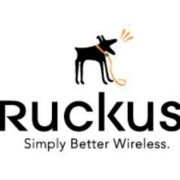Wireless WANs have become a staple of enterprise networking because they connect everyone, everywhere. They help a business rapidly expand while making critical applications and services available anywhere, whereas, traditional WANs usually consist of wired lines connecting fixed locations.
Uwe S., the owner of a small consultancy who uses Aruba Networks Wireless WAN, discusses the variety of use cases where wireless WAN can be implemented: “The main purpose is for bigger organizations - for public, schools, universities, or bigger industries. You could scale it down also to household usage or to high-demand private usage. You can do a lot with it.” He goes on to describe where he has implemented these use cases: “We have implemented it twice on a university campus and there we have maybe 2,000 to 3000 users. We have industry users. I would say it could be anything between 3,000 and 10,000 users. If it is a midsize company, they don't have planning for scaling expenditure. With the bigger companies, they plan to expand, however, then you always bump into Cisco. It’s the biggest competitor and the most popular one.”

PeerSpot real users of wireless WAN solutions provide insight into the benefits of what this type of solution offers in PeerSpot’s comprehensive free report. A wireless WAN solution can solve multiple problems for business networks, create new opportunities, and lay the foundation for further transformation and innovation, offering these key advantages:
1) Highly reliable. Wireless broadband is an over-the-air connection. This provides protection from terrestrial challenges, such as a cut fiber line.
Ghayas U., an IT Specialist at a large manufacturing company, notes the reliability of one of Cisco Wireless WAN’s features: “Our most valuable feature involves the 802.11ac, which operates at a very high level and has updated technology. That's why we use the product, whose features we find to be very reliable.”
2) Provides flexibility. Instead of waiting weeks or even months for a vendor to install a wired line, it can be deployed immediately. Wireless is also easy to relocate to another room, site, or spot.
Mohammad A., who is a Technical Manager at a small tech vendor, explains the flexibility value of interoperability and integration of Fortinet FortiExtender, “Having the FortiExtender as a part of an SD-WAN topology is a major competitive value. You don't need to have two different vendors to interoperate and get into comparability issues or interoperability issues… the major value we're looking at is the interoperability and the integration into what we call the Fortinet Fabric. It offers seamless integration and flexibility.”
3) Expansive scalability. A wireless WAN allows organizations to operate on a massive scale. A wireless WAN can be designed to support millions of endpoints across a footprint.
Walter S., the owner of a small tech services company, mentions how the flexibility of Ubiquiti Wireless offers an easy setup along with scalability: “The most valuable aspect of Ubiquiti is the ease of setup. It's easy to set up, secure, and use. It works on an adoption basis. I can pull the system up, design a network, and pull 20 different Ubiquiti units into it.” When it comes to expansive scalability, he notes, “Ubiquiti is highly scalable.I've seen Ubiquiti rolled out in massive setups and huge buildings. I know companies that run large warehouses, manufacturing, etc., and their whole backend infrastructure is Ubiquiti. They are pleased with it.”
4) Cost-effective. Wireless WAN offers organizations the ability to spend less time on network management and troubleshooting, simplifying their network deployment and management.
A managing Partner & Technical Consultant at a tech services company who uses Ruckus Wireless WAN explains various management aspects of the solution: “Ruckus Wireless WAN also has the best management platform, and even if there are thousands of users of the solution, it's very easy to manage on Ruckus Wireless WAN. It can also support third-party equipment. It's an all-in-one solution and it has IoT and secure access capabilities. Upgrading the network to Ruckus Wireless WAN is also easy.”
A wireless WAN solution enables organizations to have enhanced secure network connectivity for everyone, everywhere. These four key elements of a wireless WAN solution are great places to start when evaluating and comparing solutions. Check out PeerSpot’s comprehensive free report to learn more.




